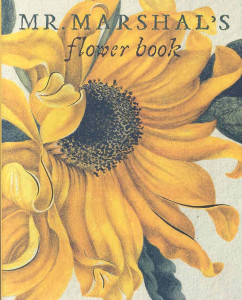 I love garden books so much that my bookshelves are listing under the weight of my collection. Some of those books are reference volumes, but they are in the minority. I favor books that go beyond the “how” of gardening to the “why” of gardening. After all, I can do an internet search and find five thousand articles on how to plant a tomato, but I find it infinitely more enlightening to turn to a book like The Sixty-Four Dollar Tomato to get a highly personal view on the glories and frustrations of growing tomatoes in the home garden. In winter, when there is much less to look at outside, it is inspiring to page through picture books, including great garden photography, florilegia, and lavishly illustrated works on specific plants. I have a beautiful facsimile edition of Les Roses, by Pierre Joseph Redouté –1759-1840—who was art tutor to Marie Antoinette early in his career and went on to be the Empress Josephine’s chosen flower painter. Les Rose is salve to the rough and dried-out midwinter soul.
I love garden books so much that my bookshelves are listing under the weight of my collection. Some of those books are reference volumes, but they are in the minority. I favor books that go beyond the “how” of gardening to the “why” of gardening. After all, I can do an internet search and find five thousand articles on how to plant a tomato, but I find it infinitely more enlightening to turn to a book like The Sixty-Four Dollar Tomato to get a highly personal view on the glories and frustrations of growing tomatoes in the home garden. In winter, when there is much less to look at outside, it is inspiring to page through picture books, including great garden photography, florilegia, and lavishly illustrated works on specific plants. I have a beautiful facsimile edition of Les Roses, by Pierre Joseph Redouté –1759-1840—who was art tutor to Marie Antoinette early in his career and went on to be the Empress Josephine’s chosen flower painter. Les Rose is salve to the rough and dried-out midwinter soul.
On gift-giving occasions, my family and friends enable my literary habit by presenting me with horticulture-related books. One of my favorite of these gifts is, Mr. Marshal’s Flower Book, by Alexander Marshal, full of detailed and beautiful flower paintings.
Alexander Marshal, the seventeenth century author of the Flower Book, undoubtedly referred to his magnum opus as a “florilegium,” a Latin word used to describe an illustrated compendium of plant and flower information. The tradition of florilegia goes back to at least the fifteenth century and continues to the present day. Notable examples include Hortus Eystettensis by Basilius Besler, another early seventeenth work that depicts flowers in a botanical garden developed by the Prince Bishop of Eichstatt in Germany; as well as the contemporary florilegium commissioned by England’s Prince Charles to celebrate the plants in his garden at Highgrove House
Marshal’s work, devoted to illustrations of flowering species, is the only surviving example of a seventeenth century English florilegium. It was republished in 2008, in a hardcover edition that includes a short biographical chapter and notes about the plants portrayed on the pages.
Biographical information about Marshal is limited, but he was probably born about 1620 and died about 1682. He was a man of wealth and refinement, though it appears that he was a self-taught artist. His friends included many of the intellectual and scientific luminaries of his day, most notably the celebrated John Tradescant, the Younger, whose family collection of curiosities was the foundation of Oxford’s modern day Ashmolean Museum.
In the seventeenth century, the gardens of wealthy Englishmen became home to an increasing number of newly introduced plants from the various parts of the world touched by British exploration, colonization or diplomacy. Marshal included scores of these new plants, along with some English natives, among the 284 species in his book. There are tulips and lilacs, originally from the Middle East, for example, and sunflowers from America. In the traditional manner of florilegia, the illustrations are arranged seasonally.
Marshal was celebrated in his own time for the vibrant colors of his illustrations, and they still amaze. Red and yellow-flamed tulips pop off the pages and the delicate variations in the shades of ornamental sweet peas are carefully depicted. Some pictures, like those of the “mourning iris” and the common sunflower also feature insects or small mammals, portrayed in the same highly detailed fashion. Marshal painted leaves, flowers and fruits as they were, complete with blemishes and imperfections. One painting of strawberry fruits, stems and leaves shows one of the berries afflicted with the gray mold or botrytis that still causes headaches for home gardeners.
Like many florilegia, Mr. Marshal’s Flower Book was intended to be instructional as well as celebratory. The illustrations allowed his contemporaries to study all the details of the various plants, including the structures of flowers, leaves and fruits. Paging through the book in January makes me long to see my own plants in flower again, and defeats winter–at least for awhile.
